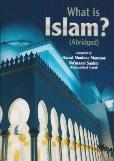- Home
- Aqaaid
- Hadeeth
- Sunnats
- Sunnats upon Awakening
- Sunnats of Miswaak
- Sunnats of Zul Hijjah
- Sunnats of Qurbaani
- Sunnats of Eid
- Sunnats of Ramadhaan
- Sunnats of Wudhu
- Sunnats of the Toilet
- Sunnats of Visiting the Sick
- Sunnats of Eating
- Sunnats of Safar (Travelling)
- Sunnats of Azaan and Iqaamah
- Sunnats of Sleeping
- Sunnats of Jumu'ah
- Sunnats of Clothing
- Sunnats of Du'aa
- Sunnats of the Home
- Sunnats of Ghusl
- Sunnats of Drinking
- Sunnats of the Musjid
- Sunnats of Sitting in a Deeni Discourse
- Sunnats of Keeping Hair
- Sunnats of Salaam
- Sunnats of Reciting the Quraan Majeed
- Sunnats of Consoling the Bereaved
- Sunnats of Interacting with Elders
- Sunnats of Zakaat
- Sunnats of Fasting
- Sunnats of Business
- Sunnats of Hajj
- Durood
- History
- Articles




- Home
- Aqaaid
- Hadeeth
- Sunnats
- Sunnats upon Awakening
- Sunnats of Miswaak
- Sunnats of Zul Hijjah
- Sunnats of Qurbaani
- Sunnats of Eid
- Sunnats of Ramadhaan
- Sunnats of Wudhu
- Sunnats of the Toilet
- Sunnats of Visiting the Sick
- Sunnats of Eating
- Sunnats of Safar (Travelling)
- Sunnats of Azaan and Iqaamah
- Sunnats of Sleeping
- Sunnats of Jumu'ah
- Sunnats of Clothing
- Sunnats of Du'aa
- Sunnats of the Home
- Sunnats of Ghusl
- Sunnats of Drinking
- Sunnats of the Musjid
- Sunnats of Sitting in a Deeni Discourse
- Sunnats of Keeping Hair
- Sunnats of Salaam
- Sunnats of Reciting the Quraan Majeed
- Sunnats of Consoling the Bereaved
- Sunnats of Interacting with Elders
- Sunnats of Zakaat
- Sunnats of Fasting
- Sunnats of Business
- Sunnats of Hajj
- Durood
- History
- Articles



